Hartfiel is with the University of Wisconsin-Madison Division of Extension's Discovery Farms program. Paletta is an outreach specialist with the University of Wisconsin's Agriculture Water Quality Program.
The use of tile drainage is becoming more popular in Wisconsin. Installing a tile drain system can be a great tool to dry soil out faster, improving timeliness of field operations throughout the cropping season. However, how do tile systems influence water movement off of the field, and what are the water quality implications?
The University of Wisconsin-Madison and Minnesota Discovery Farms Programs on-farm research has included many fields that have tile drainage systems installed. With this data, comparisons between field surface runoff to tile discharge can be made to understand the differences in nutrient losses and dynamics. It is important to be aware of any changes in hydrology or negative impacts tile systems might create.
UW-Madison Discovery Farms has edge-of-field monitoring stations through a partnership with the United States Geological Survey that calculate total runoff while collecting samples to be analyzed for sediment and nutrient content for surface runoff. Minnesota Discovery Farms uses a similar system for edge-of-field monitoring from surface runoff. For tile drainage monitoring, both programs use a similar system to document total tile flow volumes and to collect water quality samples.
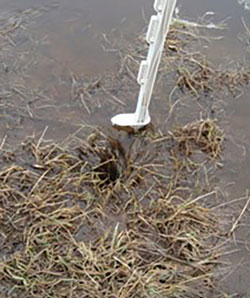
Runoff and soil loss
Surface runoff sees a handful of large events each year, whereas tile drains are typically running more often with smaller amounts. Discovery Farms observed eight days as the median annual number of days of flow for surface runoff at any given site. In tile systems, runoff was seen 174 days out of the year.
Data also show that surface runoff occurs on fields with tile when tile lines are flowing at maximum capacity. This suggests that runoff on field surfaces occurs during large precipitation events when the soil is fully saturated or when tile lines cannot keep up with the large amount of water.
As seen in Figure 1, surface runoff typically has higher annual soil loss compared to tile systems. The erosion potential of surface runoff is much greater due to the impact of raindrops as well as the power of water moving over the soil surface, dislodging the soil particles. Tile drainage can reduce the amount of surface runoff by limiting the length of time the soil is at saturation and, therefore, will lower soil loss.
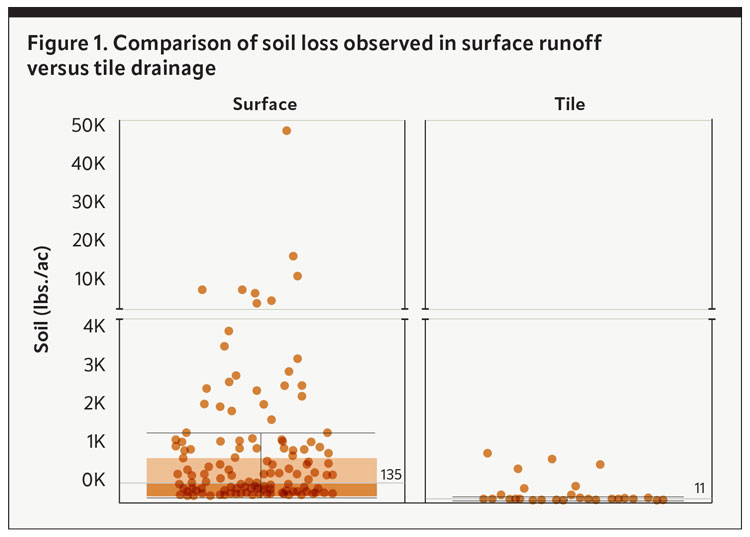
Phosphorus losses are less
Compared to surface runoff, phosphorus losses are reduced in tile system flow. Both particulate phosphorus (bound to soil particles) and dissolved phosphorus (in the water solution) interact with precipitation at the soil surface. Phosphorus generally does not move down into the soil profile with water, meaning most phosphorus losses occur at the soil surface. With more runoff on the surface (as discussed above), we can expect elevated phosphorus losses.
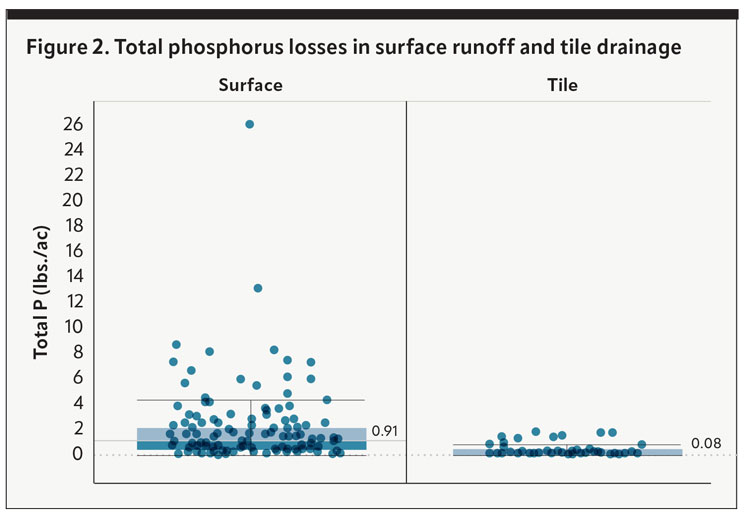
Figure 2 shows a higher amount of total phosphorus lost via surface runoff compared to tile flow. Total phosphorus losses from surface runoff had median concentrations approximately 11 times higher than in tile systems.
Nitrogen is more worrisome
Nitrogen is a larger concern in tile systems than in surface runoff (Figure 3). From data collected by both the Wisconsin and Minnesota Discovery Farms programs, over 90% of the nitrogen in tile systems is in the form of nitrate. Nitrogen in the form of nitrate is very mobile in water and moves easily through the soil profile. Excess nitrate can contribute to eutrophication in downstream water bodies, causing algal blooms.
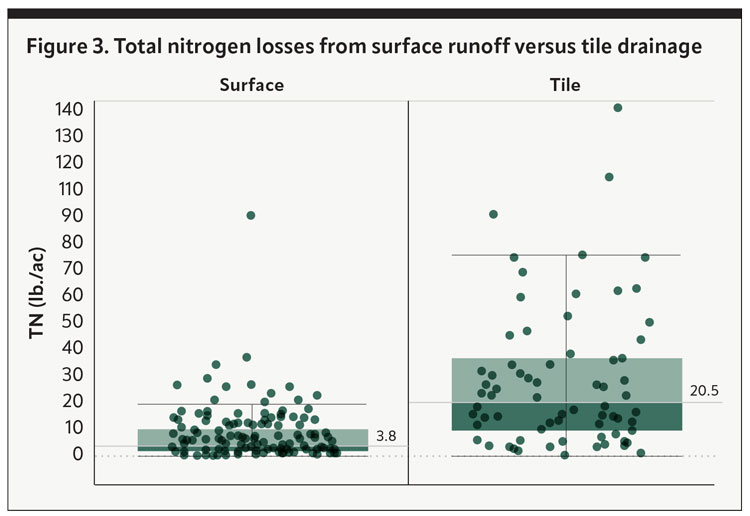
Water quality considerations
Being aware of the condition of your tile drainage system as well as soil conditions are critical when it comes to limiting the water quality risks associated with tile systems. During wet periods of the year, such as early spring, check known tile systems to ensure they are functioning properly.
In older or deteriorating tile systems, tile blowouts can occur where a weak spot has opened. Eventually, the soil around this weak spot will collapse and the tile blowout can be identified from the soil surface (as shown in the photo). Being aware of the condition of your tile drainage system allows for timely repairs, as blowouts can act as a direct conduit for unfiltered surface water into tile systems.
Other considerations for tile systems focus around nutrient management decisions. The soil condition prior to nutrient application is a critical consideration to lower the water quality risks with tile drainage. Avoid nutrient applications during high soil moisture conditions when tiles are flowing. During these conditions, a liquid manure application would add to the soil moisture, causing nutrients to be more susceptible to move into the tile system.
On the other hand, avoid nutrient applications on excessively dry soils. If your soil has visible cracks on the surface, nutrients have a direct pathway into the tile system or could be flushed in with the next rain event. Utilize visual field assessments and tools such as Wisconsin’s Manure Advisory System (www.manureadvisorysystem.wi.gov) to guide your decision-making process.
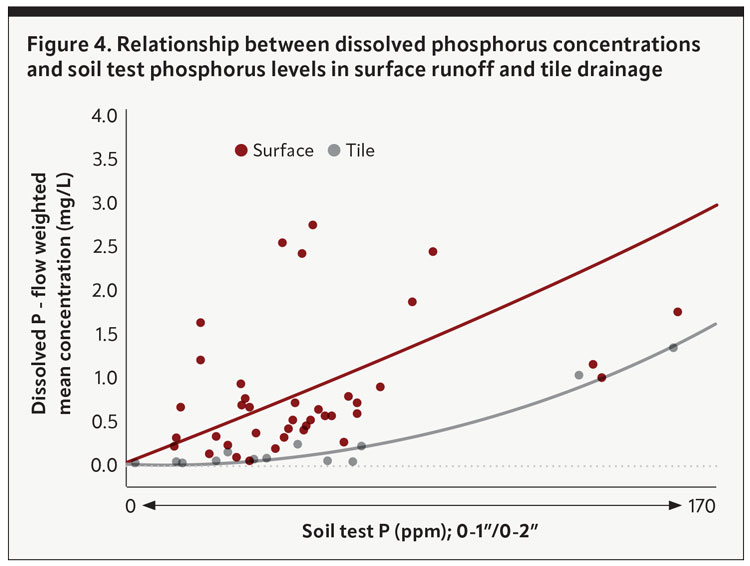
Soil test phosphorus (STP) levels can also be used as an indicator of water quality risks in agricultural systems. Looking at Figure 4, the STP levels in the top one to two inches of soil are well correlated with the dissolved phosphorus levels leaving the field in both tile systems and surface runoff. Control and maintain STP at optimum levels to reduce the amount of phosphorus leaving the field.




